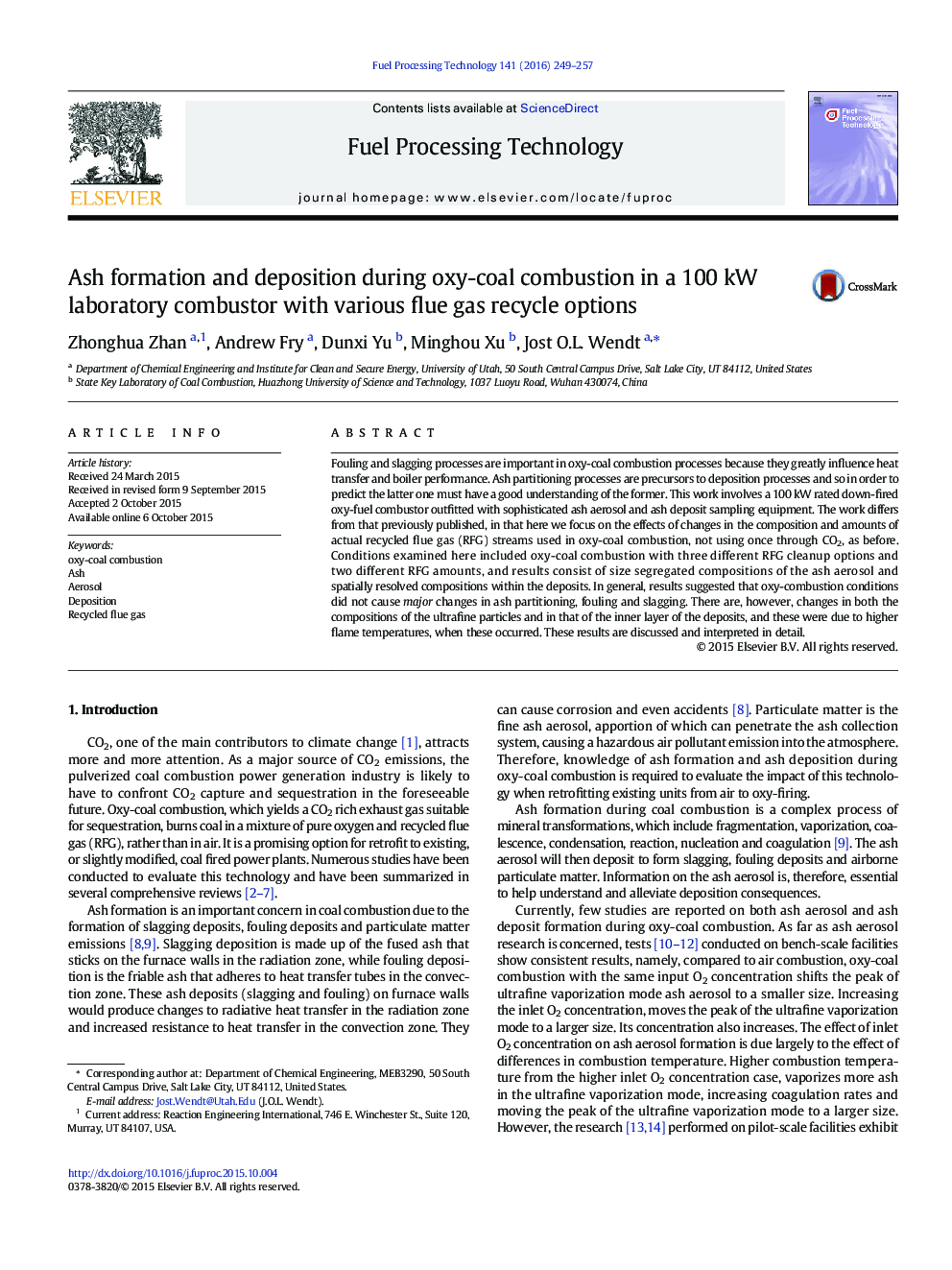| کد مقاله | کد نشریه | سال انتشار | مقاله انگلیسی | نسخه تمام متن |
|---|---|---|---|---|
| 209244 | 461663 | 2016 | 9 صفحه PDF | دانلود رایگان |

• Ash deposition during oxy-firing was explored in a 100 kW test rig outfitted with various flue gas recycle options.
• Relationships between the size segregated ash aerosol and the spatially resolved deposit were determined.
• Oxy-firing caused only minor changes in the compositions of the bulk ash aerosol, bulk fouling and slagging deposits.
• Changes in the compositions of the sub-micron aerosol and the inside deposit were caused by changes in the RFG amounts.
Fouling and slagging processes are important in oxy-coal combustion processes because they greatly influence heat transfer and boiler performance. Ash partitioning processes are precursors to deposition processes and so in order to predict the latter one must have a good understanding of the former. This work involves a 100 kW rated down-fired oxy-fuel combustor outfitted with sophisticated ash aerosol and ash deposit sampling equipment. The work differs from that previously published, in that here we focus on the effects of changes in the composition and amounts of actual recycled flue gas (RFG) streams used in oxy-coal combustion, not using once through CO2, as before. Conditions examined here included oxy-coal combustion with three different RFG cleanup options and two different RFG amounts, and results consist of size segregated compositions of the ash aerosol and spatially resolved compositions within the deposits. In general, results suggested that oxy-combustion conditions did not cause major changes in ash partitioning, fouling and slagging. There are, however, changes in both the compositions of the ultrafine particles and in that of the inner layer of the deposits, and these were due to higher flame temperatures, when these occurred. These results are discussed and interpreted in detail.
Journal: Fuel Processing Technology - Volume 141, Part 2, January 2016, Pages 249–257